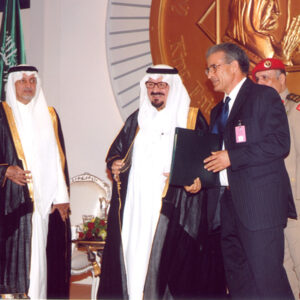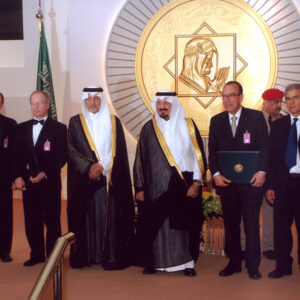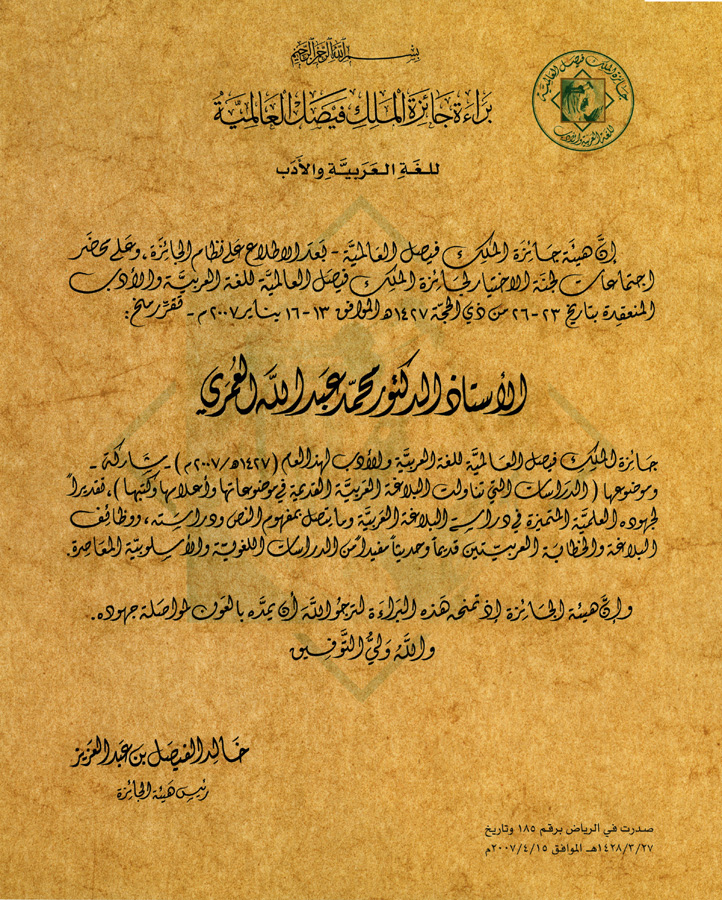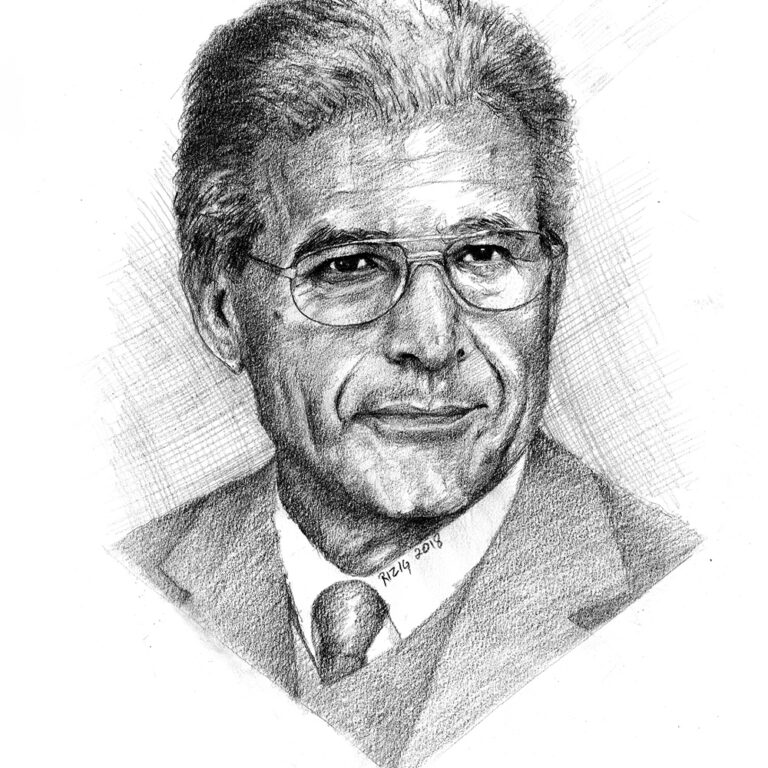
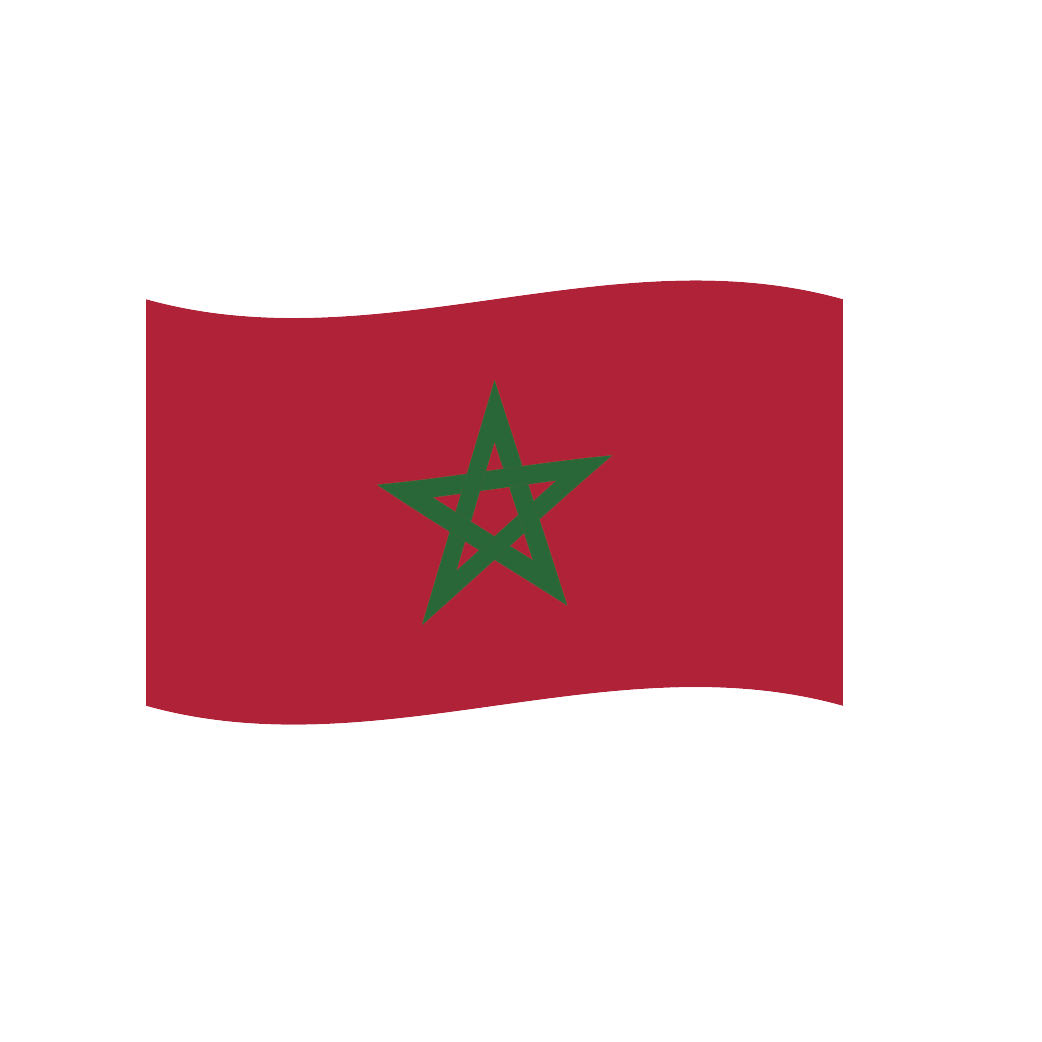
Professor Muhammad A. Al-Omari
King Faisal Prize in Arabic Language and Literature 2007 Laureate
Topic: "Studies on Ancient Arabic Rhetoric"
Rhetoric resembles medicine when curing the body, while rhetoric cures discourse; both require moral obligations preventing drifting away from noble objectives

Mohamed Al Omari received his Ph.D. from Mohammed V University in Rabat, where he is currently a Professor Emeritus of Arabic rhetoric, communication and discourse analysis and literary criticism. He is a member of the Moroccan Writers’ Union and editor of several journals.
Al-Omari’s research is primarily focused on examining classical Arabic rhetoric from a modern perspective. Realizing the difficulty of fully comprehending Ancient Arabic rhetoric without due consideration of contemporary rhetoric concepts, he first verified Mohamed El-Ifrani’s book The Easy Way to Explaining Ibn Sahl’s Tawashih, a major text of applied Arabic rhetoric, then translated Jan Cohen’s: The Poetic Language Structure (jointly with M. El Wali) and Henrich Plet’s: Rhetoric and Stylistics; both of which strongly emphasize the resourcefulness of classical rhetoric in developing a modern insight into the subject. He also sought to revive long forgotten aspects of Arabic culture, namely the phonetic structure of Arabic poetry and the pragmatic argumentative dimensions of Arabic rhetoric. His work on poetry phonetics was published in a series of three books: Poetic Discourse Analysis, which received the Moroccan Book Award, Phonetic Equivalences in the Rhetorical Vision and Trends of Phonetic Equivalences in Ancient Arabic poetry. His studies on argumentative dimensions of Arabic rhetoric were published in two other books: Persuasive Discourse Rhetoric and The Circle of Dialogue. In the latter, he proposed a model of rhetorical dialogue based on modern ideas. In 2001, he published a second edition incorporating both of these texts under the title Phonetic Equivalences in the Rhetoric Vision and Poetic Practice. Al Omari’s second focus of research was on the systematization and essence of Arabic rhetoric. His work on systematization was published in a book titled: Arabic Rhetoric: Origins and Extensions while his 2005 book: New Rhetoric: Fictional and Pragmatic, emphasizes the complex identity of Arabic rhetoric, defines sources from which it derived its strengths and weaknesses and elucidates many elements of Ancient rhetoric that could be utilized for constructing a contemporary view of Arabic rhetoric.
Through his grasp of modern rhetoric and stylistics research, coupled with his deep insight of Arabic language heritage, Professor Al-Oman has set an example of precise methodology and presentation of research in Arabic rhetoric.
This biography was written in the year the prize was awarded.

